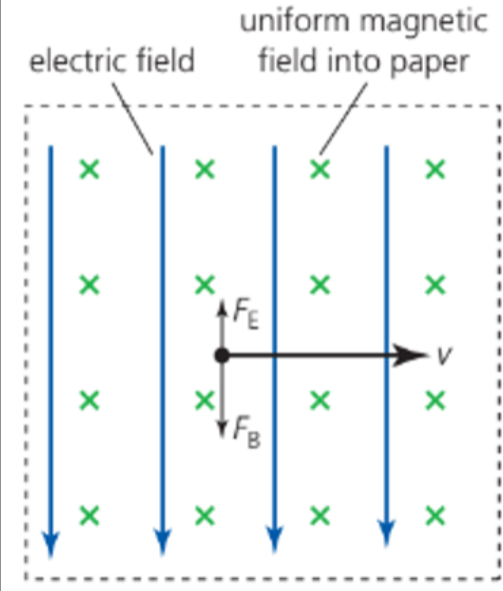Motion in a Combined Field
- We've discussed how particles move in a uniform electric field and a magnetic field separately, but what about through both at the same time?

- A charged particle moving in a perpendicularly oriented uniform electric and magnetic field will experience:
A force parallel to the electric field.
A force perpendicular to the magnetic field.
- If the electric force = magnetic force, then Eq = Bqv.
- Therefore the motion of a charged particle is unaffected by the perpendicular electric and magnetic fields, and its velocity is:
v = E/B
- Where E is the electric field strength and B is the magnetic flux density.